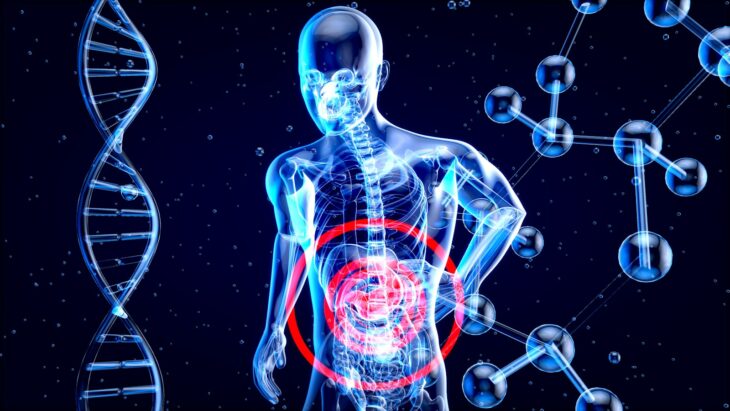Cancer cells grow abnormally and are difficult to control. When this growth happens in the inner lining of the stomach, scientists call it gastric cancer. Gastric cancer is a global health concern in the United States, Eastern Asia, and Eastern Europe. It usually has no symptoms at the onset and often affects people who have been infected by a bacterial species called Helicobacter pylori.
Researchers have found it challenging to diagnose gastric cancer at the early stages, and this has caused affected individuals to die within 5 years of diagnosis. As the cancer grows, it moves from the stomach to other organs, like the kidney and liver, through a process called metastasis, and this further increases its severity. This problem raises a need for effective early diagnostic and therapeutic targets to fight gastric cancer before metastasis occurs.
Human cells contain a molecule carrying genetic information crucial for the organs and body systems to develop and function. This molecule is the DNA and it comprises a sequence of 4 nucleotide bases: adenine, guanine, cytosine, and thymine.
To execute its duties, DNA undergoes two transformations through biochemical reactions. First, it is transcribed into a slightly similar but less stable molecule known as RNA, which is a sequence of almost the same nucleotide bases as DNA except, instead of thymine, it has uracil. This RNA serves as a template to synthesize proteins and has different types. Then, an enzyme converts some of these RNA molecules, specifically messenger RNA or mRNA, into proteins. Proteins, in turn, allow organs to grow and function.
Not all RNA molecules become proteins. Those that do not become proteins are noncoding RNAs or ncRNAs. These ncRNAs interact with each other and other molecules in the cell, and they regulate various processes required to form protein from DNA for cell growth and survival.
Researchers in the past have found a type of ncRNA, called long ncRNA, affects the ability of the body’s immune system to fight cancer cells. However, there has been no research specific to their activity in gastric cancer. Therefore, a group of biomedical researchers in China investigated how these ncRNAs influence gastric cancer development and how scientists can use ncRNAs to predict survival in gastric cancer patients.
The researchers downloaded RNA sequence data of normal and gastric cancer samples from a global cancer database called the Cancer Genome Atlas. The normal samples were from patients without gastric cancer and served as a standard or reference point for comparison. They used R programming language and software packages developed for biological data to see which groups of ncRNA were expressed at different levels in these patients. They used information from a genome browser called Ensembl to identify protein-coding genes located within and around those differentially expressed ncRNA regions.
The researchers found thousands of ncRNAs had different expression levels in gastric cancer compared to normal sample tissues. They also identified 15 genes around those ncRNA regions that influenced how gastric cancer progressed. They found approximately 8 out of 10 ncRNAs were expressed at a higher level than is required in a normal cell, while the rest were expressed at a lower level.
In addition, the researchers explored how long ncRNA interacted with other ncRNAs and with mRNA to influence tumor growth and patient outcomes. They identified 5 long ncRNAs that interact with mRNA and a different type of ncRNA called microRNA. These long ncRNAs caused an abnormal increase and decrease in protein levels within cells, which influenced the occurrence and progress of tumors as well as differences in patient outcomes. They reported one microRNA that prevented tumor growth and could serve as a potential target during treatment.
They used statistical methods to analyze the ratio of cells that fight infection and harmful substances, called immune cells, in cancer and normal samples and examined how each cell interacted with ncRNAs and affected patient survival. The study highlighted certain immune cells were higher depending on the age of patients from which the data was obtained and the stage of gastric cancer. They confirmed a relationship between immunity and the regulatory network of long ncRNA in gastric cancers. They identified specific immune cells whose presence increased the chances of patients surviving gastric cancer and those whose presence reduced survival rates.
The authors concluded their study provides more insight into the biological processes involved in gastric cancer by identifying new potential targets, that is specific immune cells and ncRNAs, to evaluate the chance of patient recovery and develop effective treatment for patients. However, they reported the size of cancer data to be much larger than that of normal data used for comparison, which may have affected their results. They emphasized the need for further research, especially laboratory analyses, to validate their findings.


